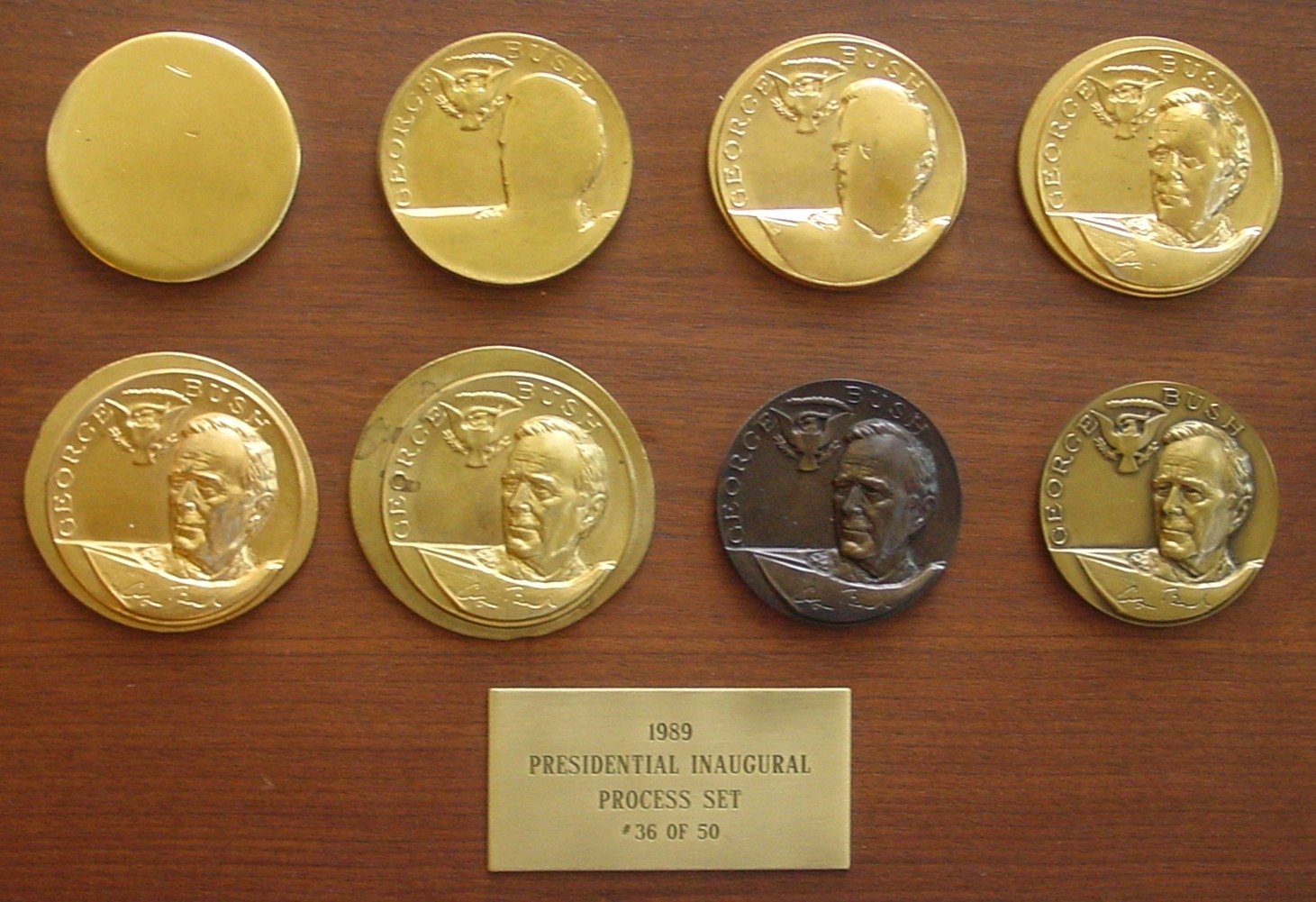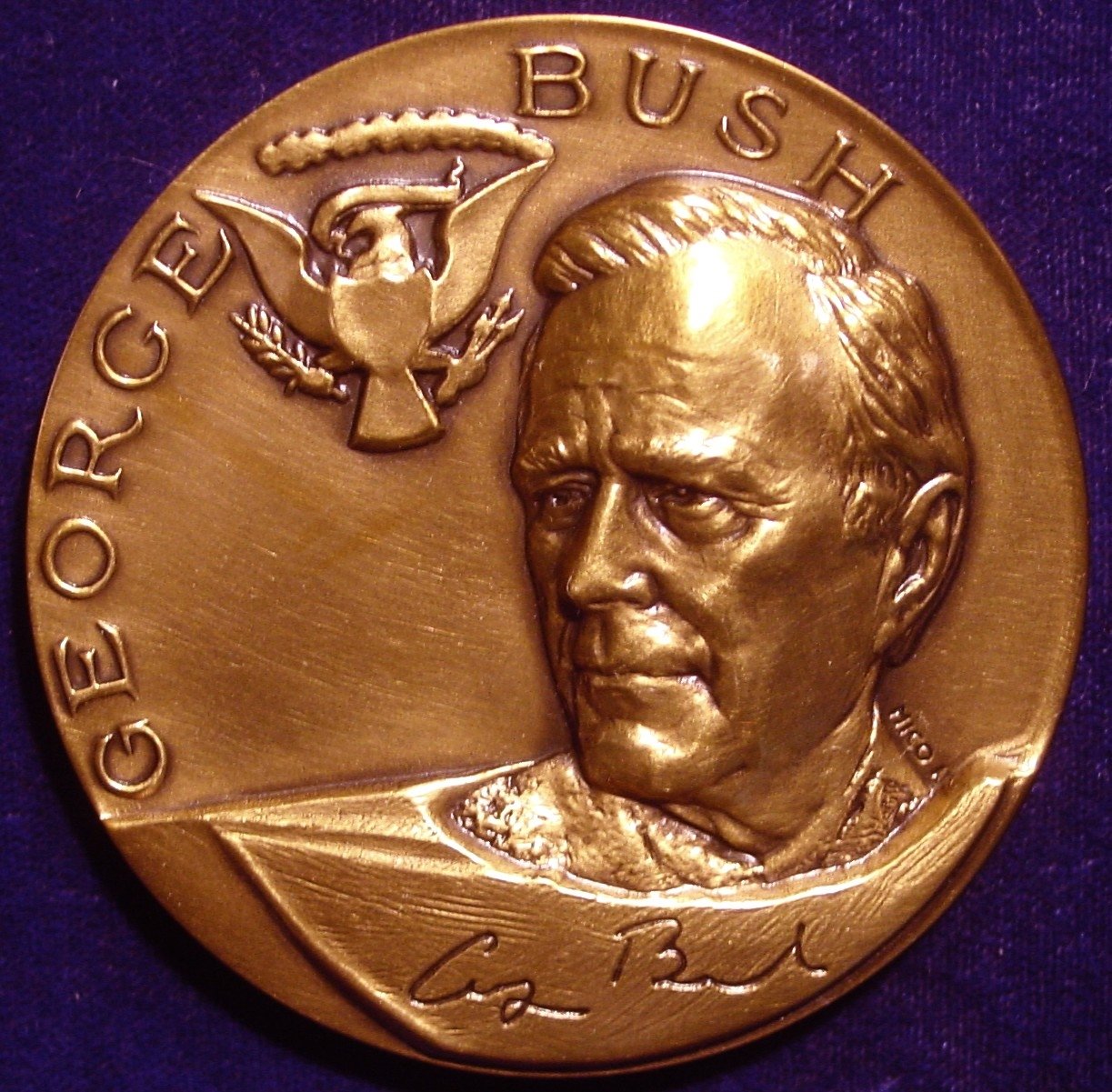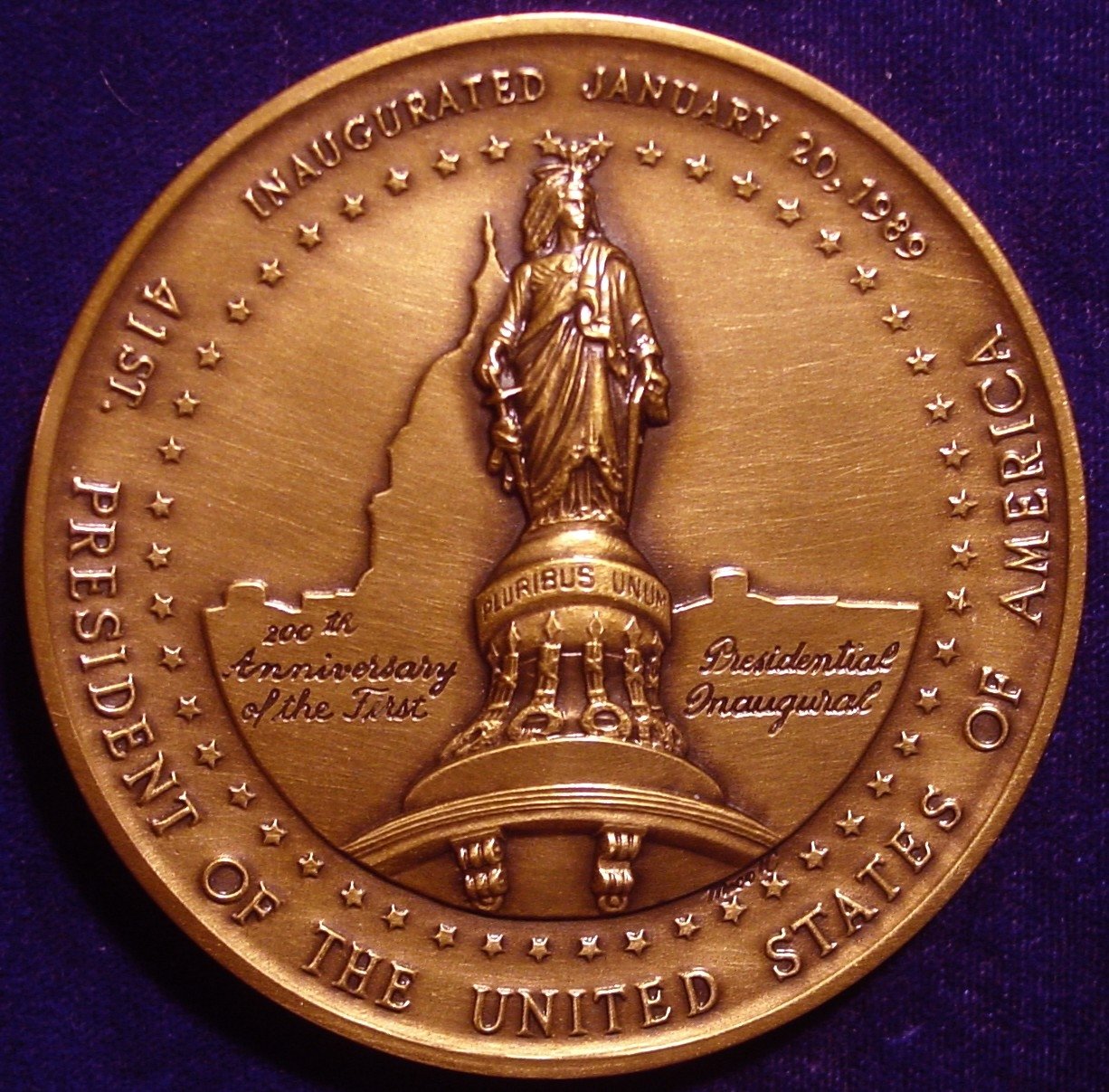A George H. W. Bush Inaugural Medal Process Set
I recently acquired this George H. W. Bush inaugural medal process set. These eight, uniface pieces, which are mounted on a board, depict the stages that are necessary to strike and finish a high relief medal, in this case one that is 70 mm in diameter in bronze. This set was issued by the Medallic Act Company. There is a tiny medallion on the reverse.
Before I get too involved discussing this set, I was wondering if anyone knew of a booklet or pamphlet that was issued with this set. Perhaps it could go into more detail about how medals are made. Of particular interest is the dark finish shown on the seventh medal which is somehow buffed off (?) create the finished product, medal eight.
Here is the set.

And here is the 1989 Bush inaugural medal. I think that it has one of the better designs that has appeared on these pieces in that last 30+ years.


Comments
I find it quite interesting to see that as each "blow" is delivered (different dies for each blow??) that some of the planchet squishes out the sides. More where there is little relief, and less where there is more relief. You can measure how the diameter grows until the medal is trimmed at step seven.
I can't help you much on the finish but I can say that there were many formulas for darkening brass and bronze in my metals finishing handbook, and most were proprietary to chemical suppliers. Solutions of sulfur or arsenic were used years ago. Today copper/selenium is often used. These are just a few of the options.
I'd guess that Medallic Art is big enough to have developed their own proprietary method to darken the surface. It would be interesting to find more info on what they do. A plant tour would work for me.
Thanks for sharing - I've never seen a progression like that outside of a pressroom.
“In matters of style, swim with the current; in matters of principle, stand like a rock." - Thomas Jefferson
My digital cameo album 1950-64 Cameos - take a look!
A fascinating set.
That is an amazing set. I saw a similar display of striking progressions for the Brenner Lincoln plaque re-issued by Signature Art Medals some years ago, also done by MAC.
In a recent article on the proposed Trump medal made by Medalcraft they used a term that escapes me, but it means that they strike the medal without a collar, and then grind off the excess. Based on your set I would say they struck each Bush medal 6 times.
Funny how they take off so much of the patina that was added in step 7. For fine art bronzes the artist/foundry would mostly stop there. But for the medals they saw fit to burnish most of it away for the finished product.
Very cool, Bill!
Dead Cat Waltz Exonumia
"Coin collecting for outcasts..."
I used to own a 1961 Kennedy process set. In that set, the dark metal was described as "oxidized". I now own another set of a different medal, though I can't remember if it was produced by Medallic Art Co. or not, and it also has the dark medal described as "oxidized".
It might not be exactly what you're looking for, but in "Medals of the United States Mint, The First Century 1792 - 1892", Julian quotes an interview between D. Wayne Johnson and William Neithercott (August C. Frank) about the bronzing/finishing process, though it is only a small portion of the full interview. In this interview, oxidation is again mentioned as a step in the process.
By the way @BillJones, do you know if those Bush medals are uniface?
Medallic Art made the 1961 Kennedy inaugural medal. I have never seen a process set of Kennedy piece, but it might exist. The standard reference, by Joe Levine, on presidential inaugural medals does not list these sets. Levine's book ended with the 1985 Reagan medal. so this Bush set didn't make it, if Levine intended to list it.
Okay here are some close-up shots of the medals on the board. The medal had be heated to a red hot temperature to anneal (soften them) between each strike. If that was not the planchet could split or shatter because it is too brittle after it has been struck.
I also find it interesting that Cameonut mentioned that there could be different dies for each set. It has been my impression that the same dies were used for each progressive strike. I know that was the case with the 1907 High Relief $20 gold coins, which had to be struck three times to bring up the design. The fear was that a different set of dies could make the design fuzzy or result in doubling.
At any rate here goes.
Blank planchet
Strike one
Strike two
Strike three
Strike four
I believe that a little more detail was added, so I think this is after strike five.
The piece was then trimmed, edge letting added and then the whole thing was darked.
The finished medal
And on the back of the board there is this little medalet that is smaller than a dime.
NOW ...
Wouldn't have been neat if someone had thought to save a "process set" from the 1907 High Relief double eagle?
My 1961 Kennedy Process Set was the miniature medals, not the inaugural medals. However, they did make process sets of the 1961 Kennedy Inaugural medals as well. This one sold for $2000+.
I doubt that multiple sets of dies were used for any special striking sequence. If multiple sets of dies were used, it was likely to replace deteriorating dies or increase throughput.
Edit: Oh. And I do see now that you mentioned that these are uniface strikes. Thanks!
I think this is correct. I was thinking that perhaps two dies were used - one to move metal to the right places and the other to strike up the detail. But since there is detail in the first strike, i agree that one die was used.
This suggests to me that batch production was run at 5 different settings for where the die bottoms out. I am not familiar with a press that would even allow for doing one piece at a time thru the whole striking sequence.
“In matters of style, swim with the current; in matters of principle, stand like a rock." - Thomas Jefferson
My digital cameo album 1950-64 Cameos - take a look!